Ultrafilter for Metals Removal
A metallurgy facility needed to remove metals from their wastewater. Bench scale treatability work performed by Dynatec proved the effectiveness of the ultrafilter (UF) system. The UF system removed chromium, copper, zinc, nickel, and other metals to low parts per billion levels needed for surface water discharge.
The company produces ferrous metals (atomized steel and sponge iron) for use by auto parts makers and other manufacturers. The steel and iron powders are used to make structural parts, filters, and bearings, as well as, in friction applications such as brake pads and linings.
Dynatec has hundreds of installations in similar applications.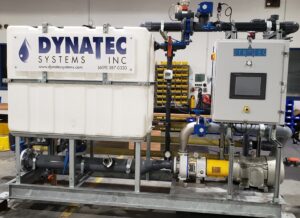
Ultrafilter for metals removal
Ultrafilter for metals removal can be achieved by chemical precipitation simply using hydroxide or sulfide precipitation. However, complexed metals have other chemistries available to cause precipitation to occur, typically in a simple one-step operation. There is no need to enlarge or flocculate the precipitated crystals, as is typical in conventional chemical systems since the pore structure of the membrane will retain the small precipitated crystals.
When oils are or may be present in the waste stream, the positive filtration provided by ultrafiltration prevents upsets that can occur with settlement or flotation devices. The membrane prevents passage of both oils and solids, including the precipitated heavy metals from passing, creating a concentrate of the metals.
If the waste stream consists principally of oils, a concentrate of the oils that will also contain the heavy metals is created that can be disposed of to oil recyclers. When the same type of waste is treated using DAF or clarifier technology, a sludge is created that can only be disposed to a landfill, and the benefit of reuse is lost and disposal is more expensive.
When the waste stream consists mostly of metals and suspended solids, the addition of a precipitant allows the waste to be simply ultrafiltered. The amount of sludge created is much less than the amount created using other technologies.
Dynatec’s design of ultrafiltration systems for heavy metals separation utilizes tubular membranes operated at high flow velocities. This design allows for high concentrations of metals and/or oils, and/or suspended solids in solution while minimizing cleaning maintenance of the membrane system.
Dynatec has provided systems for:
- Heavy metals removal
- Precious metals removal and recovery
- Complex wastewater streams
Ultrafilter for Metals Removal Solutions
- Ultrafiltration (UF) for metals removal
- Heavy Metals
- Metals in wastewater with oils and grease
- Precious Metals
- Metals in wastewater with chelating agents
- Ultrafiltration (UF) for reuse
- Reverse Osmosis (RO) for high purity water reuse
- Complete turnkey system solutions
- Filtration for sewer discharge of direct discharge to environment
Dynatec has designed and provided systems for reuse for:
- Wash water
- Rinse water
- Plant processes
- Cooling tower
- Boiler feed
Contaminants Removed
- Oil and Grease
- Heavy Metals
- Precious Metals
- Lubricants
- Surfactants
- Acids
- Biochemical Oxygen Demand (BOD)
- Chemical Oxygen Demand (COD)
- Suspended Solids
- Dissolved Solids
Please reach out if you have any metals removal projects that we can help with.
https://www.dynatecsystems.com/technologies/membrane-technologies/ultrafiltration-systems/
Brewery Reuse System
Brewery reuse system consists of a Membrane Bioreactor (MBR) and Reverse Osmosis (RO) system. The brewery produces high strength wastewater with COD > 8,000mg/L. An anaerobic digester ahead of the MBR, produces gas for heat and power generation. The wastewater then goes to the MBR and RO producing high-quality water that is suitable for reuse in brewery operations. The RO reject is combined with a portion of the MBR permeate to manage total TDS concentrations so it can be discharged to the sewer.
Complete wastewater purification and reuse systems
- Cooling tower makeup
- Irrigation (especially applicable to wineries)
- Boiler feed
- Cleaning and other plant processes
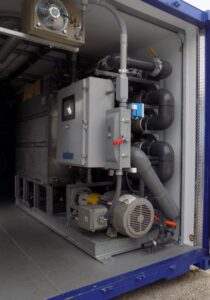
Containerized MBR for distillery
Brewery, distillery and winery wastewater treatment solutions
- Ultrafilter (UF) for removal of non-soluble contaminants
- Membrane Bioreactor (MBR)
- Conversion of existing biological systems to MBR
- To expand capacity
- To improve effluent quality
- MBR for treatment and wastewater reuse
- Reverse Osmosis (RO) for high purity wastewater reuse
- MBR for biological treatment
Contaminants Removed
- Suspended Solids
- Alcohol
- Sugars
- Ammonia
- Phosphorous
- Copper
- Biochemical Oxygen Demand (BOD)
- Chemical Oxygen Demand (COD)
- Dissolved Solids
- Acids
- Phenol
Technology Benefits – Membrane Separation System Using Tubular UF membranes
- Simple mechanical process
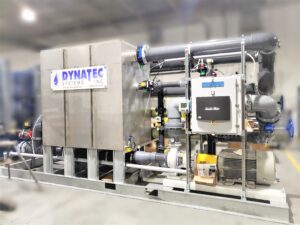
- Consistently high-quality water produced
- Ability to reuse purified water
- Low operating costs
- Unattended operation
- Skidded components reduce space requirements
- Ability to remotely monitor and control
- Cell phone and iPad compatible
The MBR configuration has proven to be optimal for treatment of many industrial wastewaters when treatment efficiency is an important consideration.
The MBR is the ideal bioreactor configuration for treatment of organic or inorganic contaminants present in industrial wastewaters. MBRs operate at a higher efficiency while achieving consistent design performance objectives. This makes MBR a more cost effective method of treatment when performance and tank requirements are considered.
Bioreactor systems such as the conventional activated sludge system, sequencing batch reactor system and trickling filters are typically designed for operation at a lower volumetric removal rate, requiring larger tanks and more space. These conventional systems often experience upsets that inhibit settling and therefore require much more operator attention than a membrane bioreactor.
The MBR has proven to be optimal for treatment of many industrial wastewaters because it is less susceptible to upsets. The MBR’s performance is not affected by changes in sludge settleability like the conventional systems, making MBR a wise choice for industrial systems that have more difficult to treat waste streams. Dynatec has over 42 years experience in dealing with difficult to treat industrial wastewaters using membrane filtration.
https://www.dynatecsystems.com/technologies/recovery-and-reuse/
Tubular UF MBR system for dairy wastewater
Tubular UF MBR system was a conversion of an existing extended air system. An existing bioreactor is also being utilized. The capacity of the existing bioreactor was doubled with an increase in the mixed liquor solids concentration and an upgrade of the fine bubble aeration to slot injector aeration.
Membrane Bioreactors
Membrane bioreactors offer a unique and effective solution for the treatment and reuse of industrial wastewater in industries such as landfills, automotive, aerostructures, distilleries and dairies. Our industry-leading designs and innovation also deliver superior performance for sanitary wastewater and biological nutrient removal applications.
The MBR configuration has proven to be optimal for treatment of many industrial wastewaters when treatment efficiency is an important consideration.
The MBR is the ideal bioreactor configuration for treatment of organic or inorganic contaminants present in industrial wastewaters. MBRs operate at a higher efficiency while achieving consistent design performance objectives. This makes MBR a more cost effective method of treatment when performance and tank requirements are considered.
Bioreactor systems such as the conventional activated sludge system, sequencing batch reactor system and trickling filters are typically designed for operation at a lower volumetric removal rate, requiring larger tanks and more space. These conventional systems often experience upsets that inhibit settling and therefore require much more operator attention than a membrane bioreactor.
The MBR has proven to be optimal for treatment of many industrial wastewaters because it is less susceptible to upsets. The MBR’s performance is not affected by changes in sludge settleability like the conventional systems, making MBR a wise choice for industrial systems that have more difficult to treat waste streams. Dynatec has over 42 years experience in dealing with difficult to treat industrial wastewaters using membrane filtration.
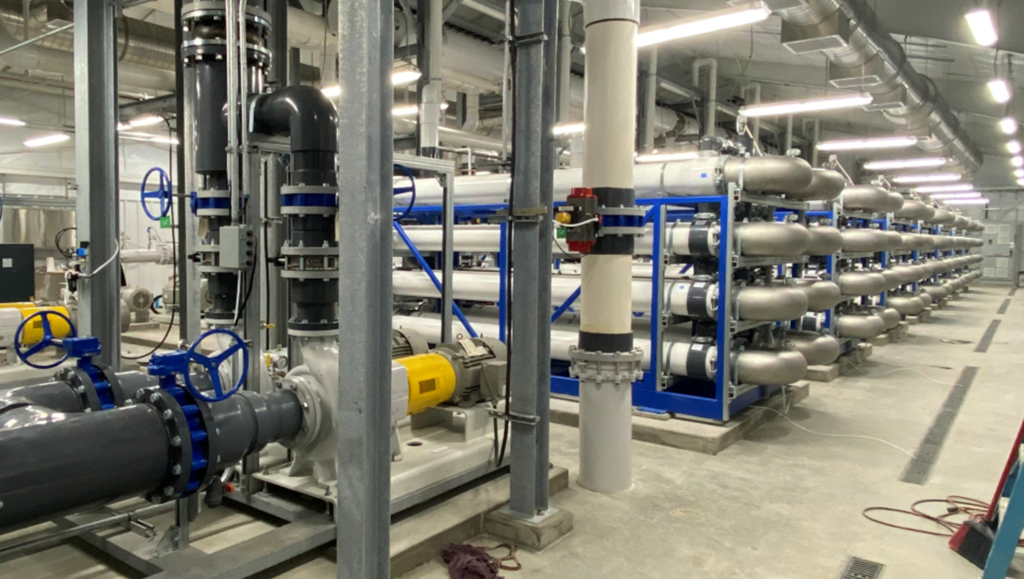
For more information on tubular UF MBR system, please contact us today.
#MBR, #wastewatertreatment, #UFMBR
Complete membrane filtration system
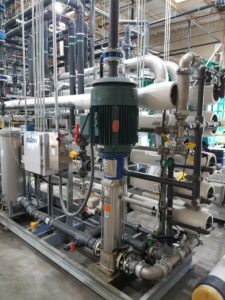 Complete membrane filtration system for a commercial wastewater treatment company provided by Dynatec Systems. The system gives them the ability to meet demanding requirements for discharge with the tubular ultrafiltration (UF) systems followed by two stage reverse osmosis (RO). They can safely meet the requirements for PFAS, 1-4 dioxane, heavy metals, chemical oxygen demand (COD) and total dissolved solids (TDS).
Complete membrane filtration system for a commercial wastewater treatment company provided by Dynatec Systems. The system gives them the ability to meet demanding requirements for discharge with the tubular ultrafiltration (UF) systems followed by two stage reverse osmosis (RO). They can safely meet the requirements for PFAS, 1-4 dioxane, heavy metals, chemical oxygen demand (COD) and total dissolved solids (TDS).
Membrane Technologies
Membrane Technologies have several membrane configurations available for Membrane Bioreactor (MBR) applications. Project requirements should drive the decision for membrane selection.
Technologies available for use in MBRs: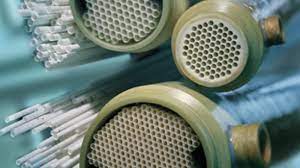
- Tubular
- Hollow Fiber
- Flat Sheet
Tubular Membranes
The original and most proven type of ultrafiltration is tubular membranes:
- Sturdy construction
- Long membrane life
- High flux rates
Of all membrane types, they are more robust and can be subjected to high pressures in demanding applications.
Out-of-Basin MBR is a configuration where mixed liquor is pumped at high velocity through the tubular membrane module. The high velocity continuously scours the membrane surface and prevents solids from building up. This process produces high flux rates and simple operation. No backwash is required. Lowest capital cost option because of the high flux rates and simple operation. Out-of-Basin MBRs by Dynatec are designed so that the energy requirements are equal to other types of MBR systems.
Advantages
- Higher performance due to higher MLSS and long sludge age
- Low Cost
- Simple Operation
- Entire system may be placed indoors
- Membrane tank not required
Hollow Fiber Membranes
They are constructed of a microporous structure having a dense selective layer on the outside surface. Many fibers must be packed into bundles and potted into tubes to form a membrane module. The surface area of even a few square feet require miles of fibers. Modules must contain no defective or broken fibers, therefore production requires strict quality control.
These membranes can withstand very high pressures from the outside, but are limited on pressure exerted from the inside of the fiber, therefore backwash rates are limited to around twice the normal permeate rate. The feed fluid is applied on the outside of the fibers and the permeate is removed down the fiber bore.
Hollow Fiber membranes are applied in clean water applications and are used in MBRs, but are limited to lower concentrations of solids than the other membrane types.
Advantages
- Low Energy
- Membrane Space efficient for large installations >5 MGD (million gallons per day)
- Cost effective for large installations
Disadvantages
- Not Cost Effective for small plants
- Membranes damaged easily
- More complicated system
- Cannot operate with high MLSS
For more information on membrane filtration systems, please contact us today.
#MBR, #UFRO, #UFMBR
Landfill leachate treatment system
Landfill leachate treatment system for a hazardous waste landfill incorporates heavy metals pretreatment followed by a tubular MBR system.
The MBR reduces:
- ammonia
- phenol
- Polychlorinated Biphenyl (PCB)
- chemical oxygen demand (COD)
- volatiles and semi-volatiles
- and other contaminants adequately for discharge
The system reduces PFAS 30-60% and carbon is utilized to reduce PFAS to low ppt concentrations.
Landfill leachate treatment systems with Membrane Bioreactors (MBR)s have developed many unique process improvements for industrial wastewater applications. Dynatec successfully uses Ultrafiltration (UF), MBR and Reverse Osmosis (RO) for landfill leachate applications.
Landfill leachate treatment requirements
Treatment can vary, depending on the discharge requirements, and the contaminants present
Landfill leachate is characterized by: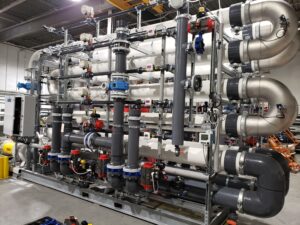
- High Total Dissolved Solids (TDS)
- Heavy metals
- High BOD
- Color
- High COD
- High ammonia
Landfill leachate treatment systems options
The MBR option: an aerated biological mixed liquor process operating at very high solids concentrations.
The advantages are:
- Long sludge age produces a well acclimated biomass. High concentration (typically 12,000 to 20,000 mg/l) provides very high rates of reaction
- Excellent nitrification and de-nitrification
- Smaller footprint then conventional aerated systems
- High-quality effluent as a result of using membranes for final clarification
- Lower sludge production than conventional systems
Typical MBR results in landfills:
| Parameter | BOD | COD | TSS | Ammonia |
|---|---|---|---|---|
| Influent | 500 | 4000 | 150 | 1000 |
| Effluent | <5 | 800 | <5 | <1 |
| % Removal | >99% | 80% | >96% | >99% |
The system produces bio-sludge, which can either be dewatered for disposal, or disposed of as a liquid sludge.
Alternative landfill leachate treatment options:
- Chemical precipitation of metals before MBR treatment
- RO after MBR treatment removes organic and inorganic contaminants, and color
- UF followed by RO
The two effluent streams from a RO system are:
- Permeate
- Concentrate (or reject)
This can be re-injected into the landfill. Its long-term effects on leachate concentrations should be considered.
Conclusion
The MBR process provides the highest possible levels of organic removal with essentially zero suspended solids in the effluent. This is the ideal feed system for RO treatment.
RO permeate can be used for other non-potable purposes:
- Irrigation
- Truck washing
- Dust control
Dynatec membrane treatment systems have successfully provided outstanding performance in many landfill leachate applications. Considerations for this technology include:
- Membrane treatment offers reliable, consistent landfill leachate
- Systems are highly cost effective, and require low levels of operator interface
- The best membrane system configuration for each application should be individually evaluated
- Membrane treatment is broadly applied in the US and abroad
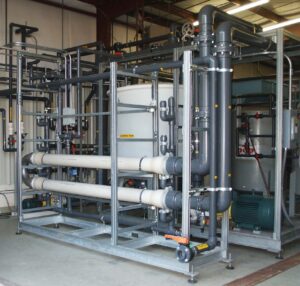
https://www.dynatecsystems.com/industries/landfill-leachate-treatment/
For more information on landfill leachate treatment systems, please contact us today.
MBR for transmissivity improvement
MBR for transmissivity improvement – Dynatec provided a low pressure nanofiltration (NF) system to remove humic and fulvic acid to improve the transmissivity (UVT) of treated water discharge. The NF system also minimizes the reject volume making the membrane approach practical.
Demands for development of membranes with specific performance continue to increase as water quality requirements tighten and water treatment system designs become more complex.
Where UV is employed for disinfection the requirement for transmissivity improvement has become important at many facilities.
The NF membrane typically rejects only larger polyvalent cations and anions and as a result produces a very small volume of reject.
MBR for transmissivity
Nanofiltration systems are typically used for:
- Color removal from surface water sources including removal of disinfection precursors
- Retention of humic and fulvic acids in landfill leachate to improve UV transmissivity
- Pharmaceutical solvent recovery and management
- Removal of tar compounds in petroleum industry
- Separation of blood compounds in medicine
- Water softening
Dynatec specializes in extensive industrial reverse osmosis (RO) membrane systems and nanofiltration (NF) membrane systems to remove soluble components of wastewater that may not have been removed by primary treatment. In most cases, the purified water can be reused.
RO is capable of rejecting soluble constituents of aqueous streams, such as:
- Bacteria

- Salts
- Sugars
- Proteins
- A wide range of organics and colors
- Improves the color, taste and properties of the fluid
This process is commonly used to purify water and remove salts and other impurities. It can be used to purify fluids such as ethanol, which will pass through the reverse osmosis membrane, while rejecting other ions and contaminants from passing.
Industrial Reverse Osmosis/Nanofiltration systems
The most common use for reverse osmosis is in purifying water. It is used to produce water that meets the most demanding specifications. This differs significantly from other RO systems that are often only designed to treat potable water. Our system is specifically designed to accommodate:
- Minimize reject volume
- Variable characteristics
- Minimize fouling
RO and NF Technology
RO uses a membrane that is semi-permeable, allowing the fluid that is being purified to pass through it, while rejecting the contaminants that remain. Most NF and RO systems are operated in crossflow to allow the membrane to continually clean itself.
Integrated clean-in-place (CIP)
The membrane skid has an integrated CIP system on the skid. This is especially important for wastewater reuse systems because the cleaning frequency of the skid is often higher than in other RO applications. With an integrated CIP system, cleaning is fast and easy, minimizing the operator’s time.
For more information on nanofiltration, please contact us today.
Wastewater Treatment System
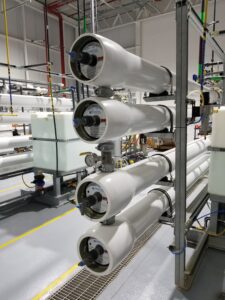 Wastewater treatment system for an aerostructures manufacturer provided by Dynatec Systems. The system removes heavy metals and produces water for reuse. Dynatec Systems also provided a double pass reverse osmosis (RO) system to produce low conductivity/low Total Dissolved Solids (TDS) water (less than 3mg/l) for the metal finishing process in lieu of a deionizing system. The RO system was much more cost effective in processing the relatively high TDS water supply.
Wastewater treatment system for an aerostructures manufacturer provided by Dynatec Systems. The system removes heavy metals and produces water for reuse. Dynatec Systems also provided a double pass reverse osmosis (RO) system to produce low conductivity/low Total Dissolved Solids (TDS) water (less than 3mg/l) for the metal finishing process in lieu of a deionizing system. The RO system was much more cost effective in processing the relatively high TDS water supply.
Dynatec specializes in extensive reverse osmosis (RO) membrane systems and nanofiltration (NF) membrane systems to remove soluble components of wastewater that may not have been removed by primary treatment. In most cases, the purified water can be reused.
RO is capable of rejecting soluble constituents of aqueous streams, such as:
- Bacteria
- Salts
- Sugars
- Proteins
- A wide range of organics and colors
- Improves the color, taste and properties of the fluid
This process is commonly used to purify water and remove salts and other impurities. It can be used to purify fluids such as ethanol, which will pass through the reverse osmosis membrane, while rejecting other ions and contaminants from passing.
Reverse Osmosis/Nanofiltration systems
The most common use for reverse osmosis is in purifying water. It is used to produce water that meets the most demanding specifications. This differs significantly from other RO systems that are often only designed to treat potable water. Our system is specifically designed to accommodate:
- Minimize reject volume
- Variable characteristics
- Minimize fouling
For more information on a wastewater treatment system to remove heavy metals and produce water for reuse, please contact us today.
Textile biological treatment system
A textile biological treatment system needed to upgrade the performance of their existing wastewater treatment system. They wanted to reuse the majority of their wastewater. This created the need for a robust system that will produce purified water for reuse. Dynatec was selected to provide the ultrafiltration (UF) components of the MBR. Out-of-basin membranes were the ideal choice.
Membranes consistently produce high-quality effluent. The presence of pigments were problematic for other alternatives. The Dynatec MBR UF system was pilot tested and demonstrated consistent performance providing the high-quality permeate required.
The MBR effluent, now free of suspended solids and most of the organic load, is then processed through a RO system for further purification. The Dynatec MBR system, using tubular out-of-basin membranes, permits operation at high MLSS and produces lower chemical oxygen demand (COD) results thereby reducing the organic fouling at the downstream RO system.
The system capacity more than doubled employing existing aeration tanks with an upgrade to the aeration. Qualitative treatment results also improved. The project cost was less than the cost to expand the plant as a conventional biological plant with the addition of another bioreactor and clarifier.
Textile biological treatment system
Textile wastewater treatment systems have been provided by Dynatec Systems for numerous facilities. The treatment method chosen depends greatly on the specific characteristics of a plant’s wastewater and the discharge requirements or wastewater reuse applications within the plant.
Textile Biological Treatment Systems Technology Benefits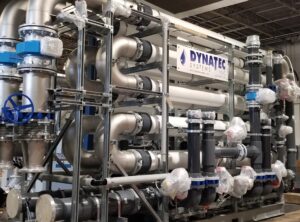
- Consistent high-quality water
- Easy maintenance avoids labor costs and regulations
- Minimal operator intervention required
- Reduced sludge disposal costs
- Brine recovery saves on processing cost
- Simple mechanical process
Textile Wastewater Treatment Systems Solutions
- Separation of specific components in the wastewater
- Ultrafiltration (UF) for pigment separation
- Ultrafiltration (UF) for size separation and reuse
- Membrane Bioreactor (MBR) for wastewater treatment and discharge
- Membrane Bioreactor (MBR) and Reverse Osmosis (RO) for wastewater purification and reuse
Contaminants Removed:
- Heavy metals
- Suspended solids
- Biochemical Oxygen Demand (BOD)
- Phosphorous
- Colloidal material
- Pigments
- Chemical Oxygen Demand (COD)
- Inorganic solids separation
Ultrafiltration offers the following advantages over conventional separation:
- No chemical required
- Very little labor required
- Simple mechanical process
- Less sludge
- Ability to concentrate the retentate for beneficial use
- Less space required
- Overall lower operating costs
Tubular Configuration:
- Higher permeate rate
- Lower rates of fouling
- Higher concentration of retentate
- Easier to clean
- Longer membrane life
- Low operating cost
For more information on wastewater reuse, please contact us today.
https://www.dynatecsystems.com/technologies/membrane-technologies/ultrafiltration-systems/
Existing biological system converted
Existing biological system converted to membrane bioreactor (MBR) at a dairy. The converted plant has the ability to process wastewater at the rate of 475,000 gallons per day.
The conversion provided the ability to increase the treatment rate and at the same time improve the quality of the treated water. The system operated at a higher concentration of mixed liquor in the bioreactor and thereby increase the throughput capacity of existing bioreactor and improves the quality of the treated water that is discharged.
MBR conversion/retrofit/upgrade solutions are offered by Dynatec Systems for a wide range of applications. Our goal for every retrofit application is to make changes that: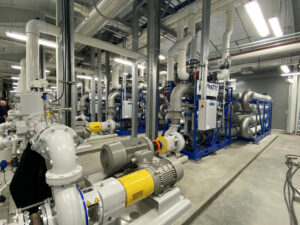
- Simplify the process
- Reduce operating costs
- Expand capacity
- Bring your system into compliance
Existing biological system converted to MBR
MBR conversion/retrofit/upgrades are perfect for Dynatec’s unique out-of-basin membrane systems. We can reuse any existing tankage and rarely require new tanks to be built.
- Replace equipment
- Upgrade systems
- Reuse assets
The Dynatec out-of-basin membrane configuration provided for optimization of both biological and membrane systems.
Contaminants Removed
- Biochemical Oxygen Demand (BOD)
- Total Suspended Solids (TSS)
- Chemical Oxygen Demand (COD)
- Phosphorous
- Ammonia
- Fat, Oil and Grease (FOG)
For more information about an existing biological system converted to a membrane bioreactor, please contact us today.
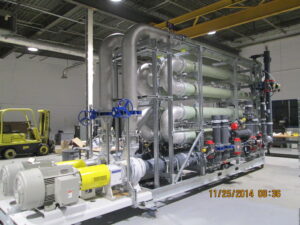
Ultrafilter for Membrane Bioreactor
Ultrafilter (UF) for membrane bioreactor (MBR) installed to process 400,000 gallons per day for a cheese processing plant.
The processing plant’s existing conventional biological system was unable to process the required volume and unable to meet the increasing qualitative discharge requirements. By converting the plant to a Dynatec membrane bioreactor (MBR), the facility was able to increase the system output while meeting the stricter discharge regulations.
Contaminants removed:
- Biochemical oxygen demand (BOD)
- Phosphorous
- Suspended solids
- Chemical oxygen demand (COD)
- Ammonia
- Fats, oil and grease (FOG)
Dynatec Systems industry-leading tubular ultrafiltration (UF) system is used to treat a broad range of industrial wastewater by separating insoluble components from waste streams. As a cost effective and simple solution for separating insoluble components and colloidal contaminants from a waste stream, wastewater UF offers significant advantages over conventional separation. It is a useful process that does not require chemicals or much space to separate insoluble contaminants.
UF is a pressure-driven process that removes the following from wastewater and other solutions:
- Emulsified oils
- Metal hydroxides
- Colloids
- Emulsions
- Dispersed material
- Suspended solids
- Other large molecular-weight materials
Ultrafiltration systems are also capable of concentrating:
- Bacteria
- Some proteins
- Some dyes
- Colloidal or emulsified components
Ultrafiltration systems excels at the clarification of solutions containing:
- Suspended solids
- Bacteria
- High concentrations of macromolecules including:
- Oil and water
- Fruit juice
- Milk
- Whey
- Electro-coat paints
- Pharmaceuticals
- Poly-vinyl alcohol and indigo
- Potable water
- Tertiary wastewater
Ultrafiltration offers the following advantages over conventional separation:
- No chemical required
- Very little labor required
- Simple mechanical process
- Less sludge
- Ability to concentrate the retentate for beneficial use
- Less space required
- Overall lower operating costs
Tubular Configuration:
- Higher permeate rate
- Lower rates of fouling
- Higher concentration of retentate
- Easier to clean
- Longer membrane life
- Low operating cost
For more information about converting an existing conventional biological system to a membrane bioreactor (MBR), please contact us today.
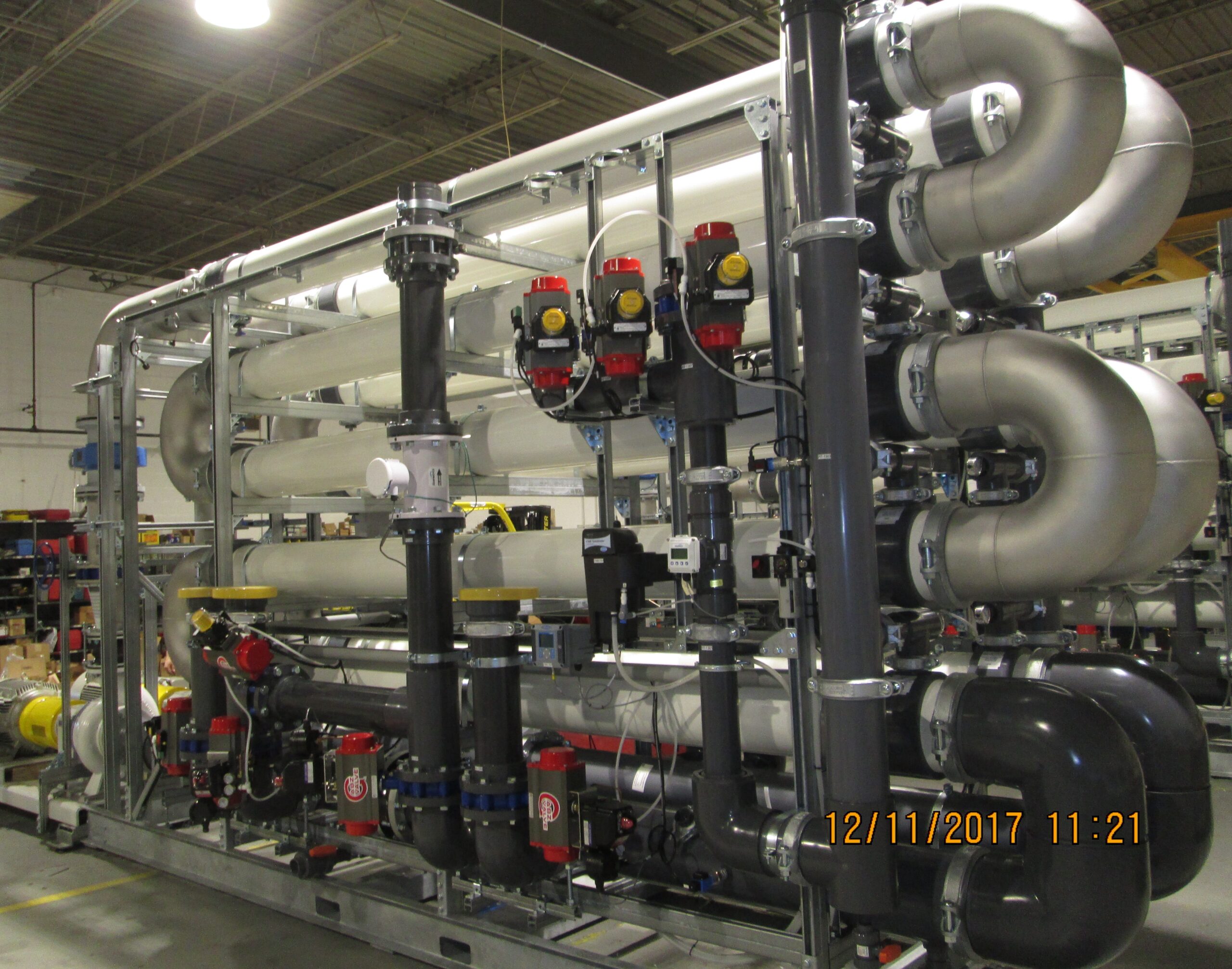
https://www.dynatecsystems.com/technologies/membrane-technologies/ultrafiltration-systems/
